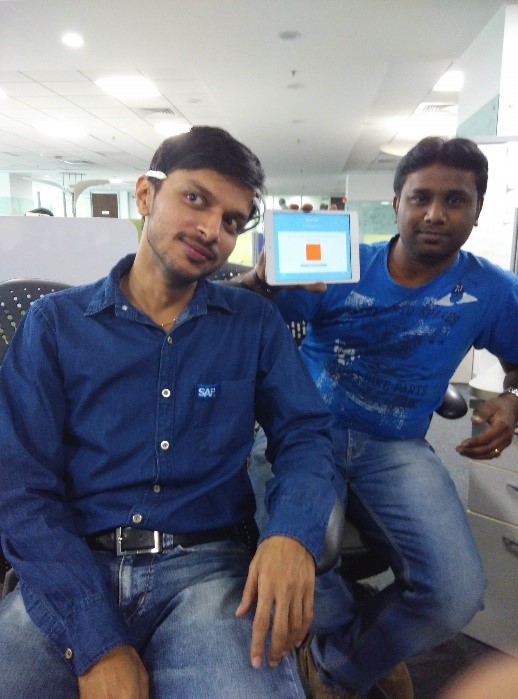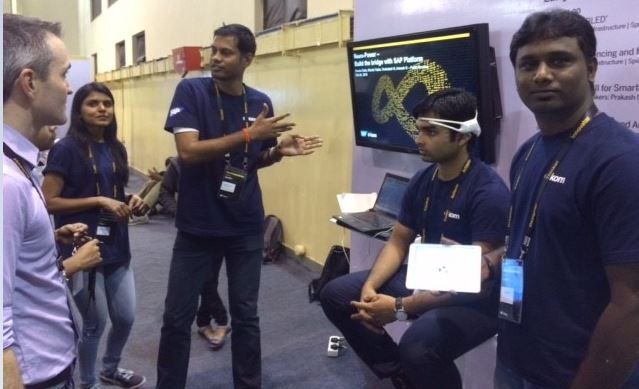
- SAP Community
- Products and Technology
- Product Lifecycle Management
- PLM Blogs by SAP
- Neuro-Power: Humane side of technology
- Subscribe to RSS Feed
- Mark as New
- Mark as Read
- Bookmark
- Subscribe
- Printer Friendly Page
- Report Inappropriate Content
Have you met a person who is quadriplegic? Or a person who met with a traumatic accident that damaged his sensory or locomotion capabilities? Or do you remember the days when your grandparents or an aged relative who struggled to do their normal day-to-day chores without the support of somebody to take care of them?
Be it being immobile, or being blind, or deaf or dumb, the dependency on a caretaker or various assistive devices like wheelchairs, electrical devices, etc. was indispensable. Assistive technology is vital to people with special abilities being able to take care of themselves at home. The government or NGOs offers various health services or schemes to cater to their needs. Surprisingly, in few cases, the special persons were unwilling to co-operate with a caretaker. In most times, the caretaker failed to interpret the real needs of the “special” person. Communication, as we realize, is complex. The process of gathering the real needs is time consuming and frustrating for both, the special person and the caretaker.
Neuro-Power: Building the bridge
We have developed a mobile application that will enable the user to control the application by just wearing a neuro device and performing mental commands or facial gestures. Neuro device is a headset that can read your brain signals and render them onto a computer user interface. It supports facial and mental command expressions recognition features. These devices actually cost in few hundreds of dollars today, which ideally could be affordable for NGOs and government aided health departments in service offerings.
This blog shows a use case that embraces the power of neuro-technology in shaping a new communication channel to the incapacitated.
Usecase scenario:
Nick Johnson is quadriplegic due to a recent accident. He is unable to speak and unable move his arms and legs temporarily. However, the doctor is optimistic that he can revert to normal life after six months. Nick wants to seek aid and support from the government, who nominates a planner to collect his needs and goals for the next 6 months. However, it is very difficult for Nick to communicate his needs owing to his condition.
Solution:
To provide a seamless, touch-free, user experience, we have designed an iOS mobile application “Neuro-Power” that uses the EEG signals captured by a neuro headset. The application contains two sections:
- Training section
- This stage enables an end user to train the application using his preferred facial gestures( example: wink, blink, raise brows, smile, clench, smirk, laugh, etc) and mental commands(example: push, pull, lift, drop, rotate,etc onscreen animated object).
- These gestures/rules can be custom configured based on the specific condition of the person.
2. Self-Assessment section
- This section enables the user to self-asses his physical condition by answering a WHODAS questionnaire.
- Additionally, the user can self-define his needs to seek assistance from NGO or government health departments.
Thus, the end user is able to self-create a support plan and seek direct assistance from the government or NGO departments. The official representative or caseworker will analyze this submission remotely and approve duly after consideration by releasing entitled social benefits (via CRM Social Application, CRM Social Service Plan, Social Case, etc to monitor entitled benefit services periodically) to the differently abled person, thereby catering to the real needs.
Possible social impact:
- Enable government/NGOs to manage and monitor financial funds to extend support to differently abled citizens
- Bring Transparency in the processes mainly involving Governments/NGOs and the seekers of social benefits
- Digitize and build network of differently abled people together to address social issues quickly
- New channel of communication bringing hope for the differently abled citizens
- With the simple-to-use and simple-to-train app, the differently abled can self create their support plan, thereby eliminating the frustrating interactions with the caretaker in deriving the real needs
Hands-On session:
Training the Neuro-Power mobile app using emotiv neuro headset.


SAP d-kom Event @Bangalore, India 2016:
We participated in SAP d-kom event 2016 in Bangalore. Here we displayed a live demo of Neuro-Power at the ‘D-Shop Arena’ and at the ‘Early Talent’ demo pod. We engaged in interactive discussions with the audience throughout the day and received an overwhelming response.



When the volunteered person from our team, wore the headset and started controlling the remote mobile application just by mere “mental thinking”, the crowd was awestruck. We could hear “That’s Crazy!” and “Wow” responses from the audience.
A peek into few feedbacks collected after the demo:
- Innovative idea. Great combination of technology and social welfare
- Very futuristic yet achievable. Awesome job
- Really innovative. Doing great work. Go Ahead. All the best
- Very good showcase. Immense potential to carve out new use cases
- The concept and the area of application is very interesting… amazing technology
- Amazing! More scenarios are requested. This could be a game changer
Conclusion:
Machine learning is a constantly evolving subject. EEG based neuro devices show us the potential path towards shaping a new communication channel that can also transform lives for the better.
To get more details on the project "Neuro-Power", you may approach any of the below contacts:
Mohan George; Avinash G; Venkatesh N; Rupali Ray; Ullas AN; Sourav Dutta; Mamta Yadav;
Share your thoughts by adding comments below.
- SAP Managed Tags:
- SAP Innovation Management,
- Mobile
You must be a registered user to add a comment. If you've already registered, sign in. Otherwise, register and sign in.
- Implementation journey of SAP ECTR at OSG EX-CELL-O Coldforming Technologies in Product Lifecycle Management Blogs by SAP
- Consumption of an API within a Custom POD Plugin in SAP DMC in Product Lifecycle Management Q&A
- SAP PLM Pros - A Recap of "Battle of the Experts" in Product Lifecycle Management Blogs by SAP
- A quick-start with SAP Enterprise Product Development – Watch the Interview! in Product Lifecycle Management Blogs by SAP
- Extending SAP Digital Manufacturing with Azure, Part II: Applying the reference architecture to a visual inspection scenario in Product Lifecycle Management Blogs by Members